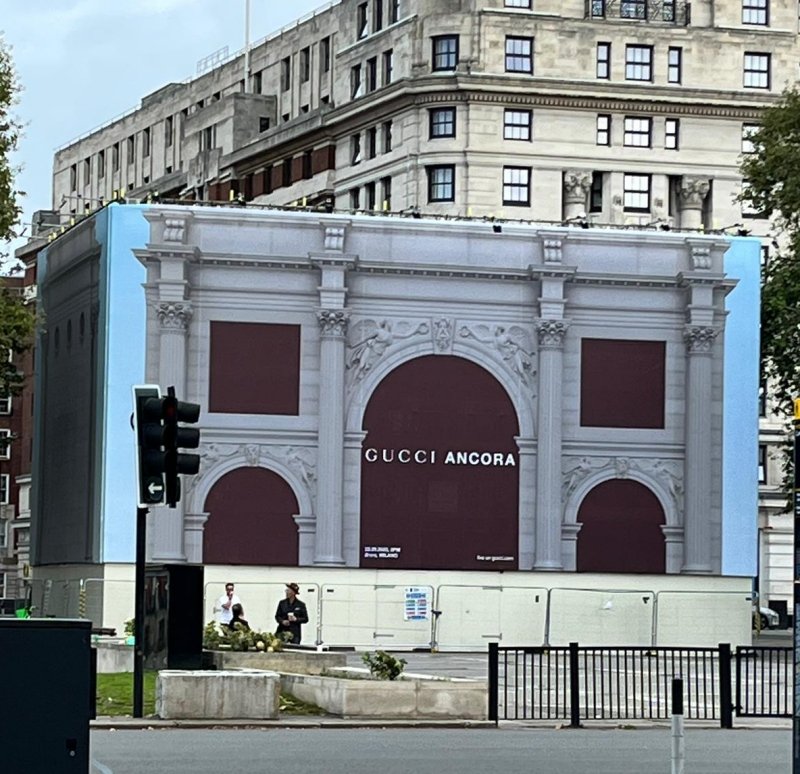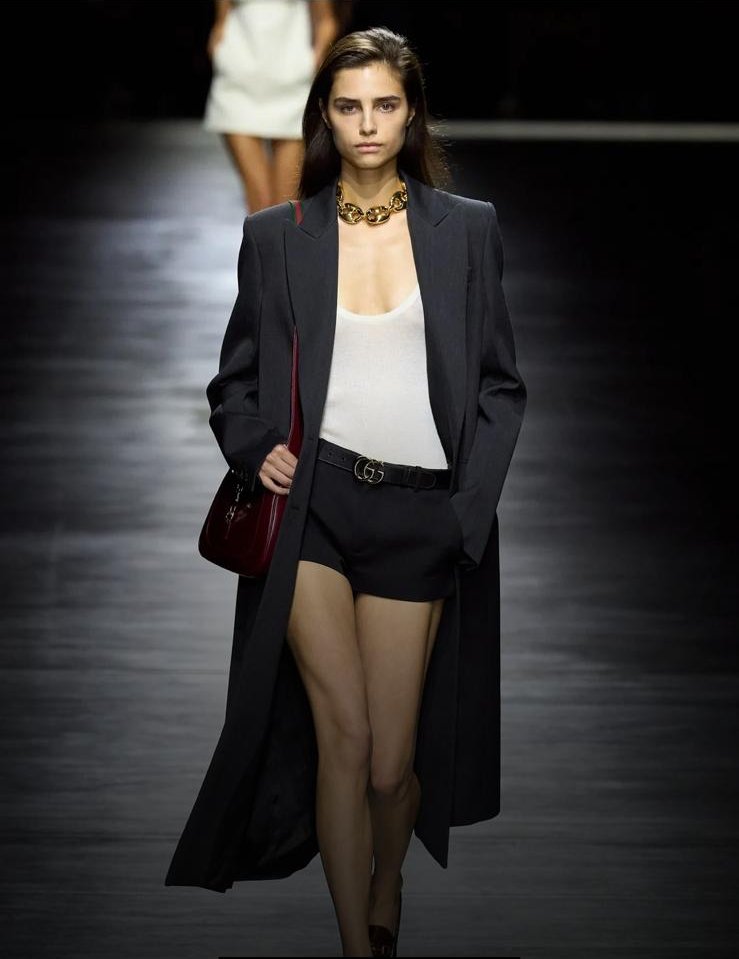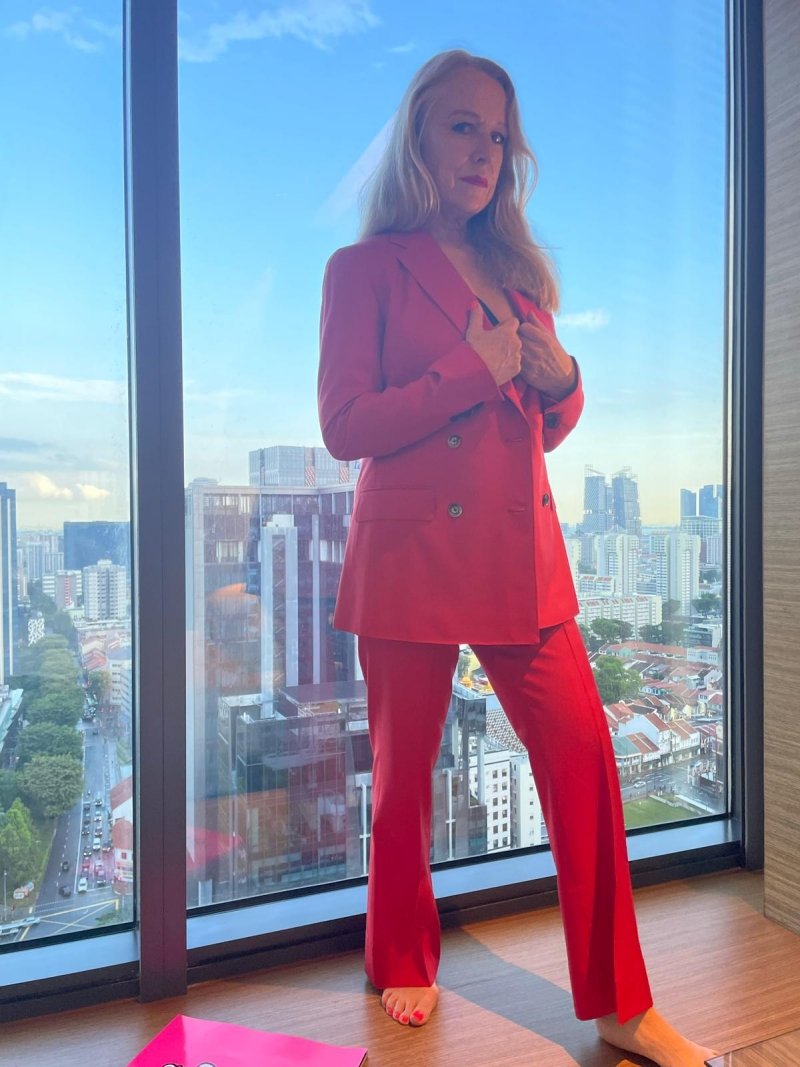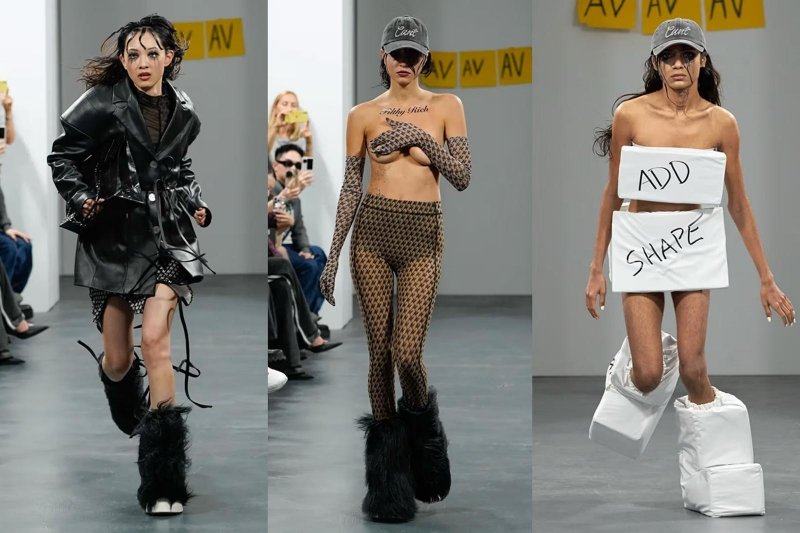Fashion Month has just finished with much movement in the luxury space during this time. The usual comings and goings of fashion seem more extreme and potentially more significant right now. Sarah Burton showed her final collection at Alexander McQueen after an incredible tenure pursuing McQueen’s vision and legacy. Fabio Zambernardi was showing his last collections at Prada and Miu Miu after a staggering 21 years as Design Director. Peter Hawkings showed his first collection at Tom Ford, which was exactly Tom Ford recreated or on repeat. We also saw the new Designer at Gucci Sabato De Sarno’s new collection, which was a completely new direction and feel for the Brand. There was also the excitement of Phoebe Philo’s impending return to the business.
Gucci SS24. Credits: Lauchmetrics Spotlight
What does this all mean, if anything? Kering is clearly actively taking measures to transform its business and Brands, with the changes at Gucci and McQueen, as well as the partial investment in Valentino. Somehow, much of what is happening seems to be an effort to create the glory days of Fashion and the era when “luxury” became a household name and the aspirational consumer was born. We have collections that display those exact years - Tom Ford and Gucci - which both have very ‘90s-era aesthetics. Why is this happening, and why is it relevant? Is there a sense of desperation to recreate the former magic of Luxury?
What is actually going on? Clearly, there have been changes in consumer behaviours since the pandemic. There was an expectation that China Tourism would bounce back following the easing of Covid restrictions, but it has not. The US consumer is not performing in retail sales figures. People are dealing with the reality of high interest rates and an increased cost of living. They probably bought many things during lockdown and have now realised they don’t really need things to make them a better person or to feel good. As I watch influencers with gorgeous lives and huge hauls, I question who else is buying all this stuff. Simply, I have heard from many people of all ages, income levels and locations that they are all shopping differently. In a much-reduced way, they want to experience luxury not just through shopping for expensive things but, rather, more of an experience and quality of life.
So, how do we, as consumers, want to experience luxury now and in the future?
In this blog, I have previously talked about the future of luxury being authenticity and connection to the consumer rather than owning something from a conglomerate who are noticeably increasing prices while reducing quality. We discussed “Stelar”, the beautiful, sustainable, very authentic Brand “made in communities, not in factories”. We have also explored upcycling our beloved clothes to give them a new life. We referred to the Investment in “Pellicano Hotels”, truly indicating the growth of travel and experience over things. Have we learned something from the challenging times of recent years, realising that experience, time, and memories are true luxuries?
If we have gained a new perspective in life, towards becoming conscious shoppers, then this is a step forward to the customer of the future. From this, brands will need to be valuable and authentic and treat us with respect.
Enjoy fashion; love life.
Kate
Kate Padget-Koh















